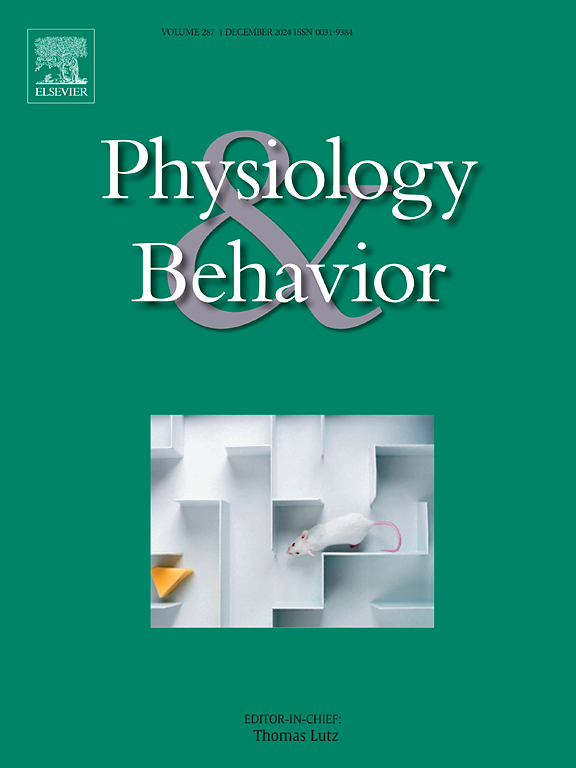下丘脑炎症、食欲控制和肥胖关系中的澹红细胞
IF 2.4
3区 医学
Q2 BEHAVIORAL SCIENCES
引用次数: 0
摘要
下丘脑炎症已被确定为驱动肥胖和相关代谢紊乱发展的关键因素。这种与炎症相关的能量平衡破坏依赖于代谢信号感知和下丘脑细胞功能的改变,共同导致暴饮暴食和体重增加。在控制能量平衡的下丘脑细胞网络中,最近的研究强调了神经胶质功能障碍在这些过程中的重要性,这表明这些细胞可以为减肥治疗提供新的途径。在摄入高脂肪饮食后,即使在很短的时间内,神经胶质细胞也会迅速激活,并通过炎症串扰破坏整个系统。本文综述了神经胶质细胞和神经元在与肥胖、糖尿病及相关并发症相关的下丘脑炎症中的分子相互作用的最新进展。值得注意的是,它强调了被称为伸长细胞的特殊室管膜细胞,其在下丘脑炎症中的作用仍然被低估,并研究了靶向这种细胞类型作为代谢紊乱治疗策略的潜力。本文章由计算机程序翻译,如有差异,请以英文原文为准。
Tanycytes in the nexus of hypothalamic inflammation, appetite control, and obesity
Hypothalamic inflammation has been identified as a critical factor driving the development of obesity and associated metabolic disorders. This inflammation-related disruption of energy balance relies on alterations in metabolic cues sensing and hypothalamic cellular functions, together leading to overeating and weight gain. Within the hypothalamic cellular networks controlling energy balance, recent studies have highlighted the significance of glial dysfunction in these processes, suggesting that these cells could provide new avenues for weight loss therapies. Glia rapidly activates following the consumption of a high-fat diet, even after a very short exposure, and contributes to the disruption of the entire system through inflammatory crosstalk.
This review explores recent progress in understanding the molecular interactions between glial cells and neurons in hypothalamic inflammation related to obesity, diabetes, and associated complications. Notably, it highlights specialized ependymal cells called tanycytes, whose role is still underestimated in hypothalamic inflammation, and examines the potential for targeting this cell type as a treatment strategy for metabolic disorders.
求助全文
通过发布文献求助,成功后即可免费获取论文全文。
去求助
来源期刊

Physiology & Behavior
医学-行为科学
CiteScore
5.70
自引率
3.40%
发文量
274
审稿时长
47 days
期刊介绍:
Physiology & Behavior is aimed at the causal physiological mechanisms of behavior and its modulation by environmental factors. The journal invites original reports in the broad area of behavioral and cognitive neuroscience, in which at least one variable is physiological and the primary emphasis and theoretical context are behavioral. The range of subjects includes behavioral neuroendocrinology, psychoneuroimmunology, learning and memory, ingestion, social behavior, and studies related to the mechanisms of psychopathology. Contemporary reviews and theoretical articles are welcomed and the Editors invite such proposals from interested authors.
 求助内容:
求助内容: 应助结果提醒方式:
应助结果提醒方式:


